This website stores cookies on your computer. These cookies are used to collect information about how you interact with our website and allow us to remember you. We use this information in order to improve and customize your browsing experience and for analytics and metrics about our visitors both on this website and other media. To find out more about the cookies we use,
see our Privacy Policy.
Al Is Here. Are You Ready? Explore Tips on Your Device Refresh Strategy
Laptop Buying Guide
How to Choose the Right Laptop to Meet Your Needs
Due to availability of more powerful—and relatively inexpensive mobile components—computers have become much more portable in the last several years. In both business and personal-use markets, laptops have increased in popularity, outselling traditional desktop PCs since 2008. Desktop models now make up less than 20%* of all computers sold. Even with the massive influx of tablet options, traditional laptops account for approximately 40%* of all computer sales.
Laptops offer many advantages. They are small and light enough to be portable, yet still powerful enough to run complex, demanding programs. They offer capabilities and a degree of usefulness not found in even the best tablet or smartphone.
With an almost unlimited number of options for a large variety of use cases, equipping and buying the right laptop, tablet, or mobile device can be a daunting and confusing challenge. Whether you need to buy one or multiple laptops, for business or personal use, our laptop buying guide will help you make a wise, informed purchasing decision.
Laptops offer many advantages. They are small and light enough to be portable, yet still powerful enough to run complex, demanding programs. They offer capabilities and a degree of usefulness not found in even the best tablet or smartphone.
With an almost unlimited number of options for a large variety of use cases, equipping and buying the right laptop, tablet, or mobile device can be a daunting and confusing challenge. Whether you need to buy one or multiple laptops, for business or personal use, our laptop buying guide will help you make a wise, informed purchasing decision.
Most Popular Laptops
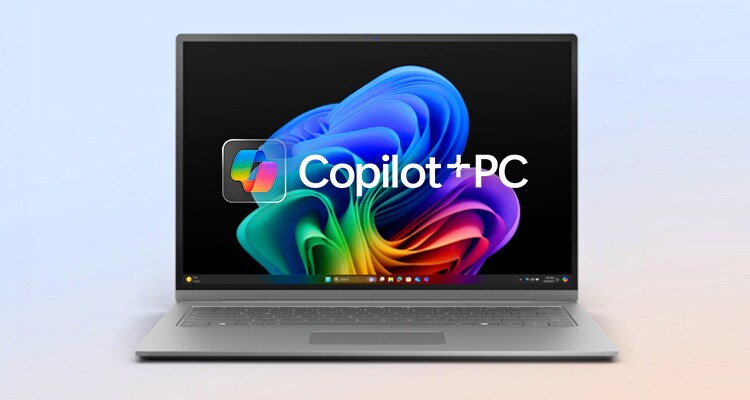
Copilot+ PCs Powered by Snapdragon X Elite
A New AI Era Begins at WorkThe Fastest, Most Intelligent Windows 11 Pro PCs Ever
Operating System
|
|
Windows 11Windows Knows Business
Microsoft’s deep industry experience is your competitive advantage. Build your dreams on decades of thought leadership, global partnerships, and an OS implemented by 90% of Fortune 500 companies.1
1 FY23 Q3 Press Releases Investor Relations, Microsoft, 2023
2 Microsoft Digital Defense Report, Microsoft, 2022 |
|
|
macOSIt’s why there’s nothing else like a Mac. macOS is the operating system that powers every Mac. It lets you do things you simply can’t with other computers. That’s because it’s designed specifically for the hardware it runs on—and vice versa. macOS comes with an entire suite of beautifully designed apps. It works with iCloud to keep photos, documents, and other items up to date on all your devices. It makes your Mac work like magic with your iPhone and other Apple devices. And it’s been built from the ground up with privacy and security in mind.
|
|
|
Chrome OSChrome is a more lightweight operating system. So, while it gives you a full range of Google apps for both online and offline use, it doesn’t offer you the same number of features, or the same range of compatible applications Windows and macOS do. For some laptop users, this won’t be a problem. If you have a limited budget, and only need basic computing functionality, Chrome may be the way to go.
|
Processor
It’s simple: the faster and more powerful the processor, the more work your laptop can do, and the faster it can do it. But, just because a CPU is more powerful, doesn’t mean it’s the right one for you. So which processor is right for you?
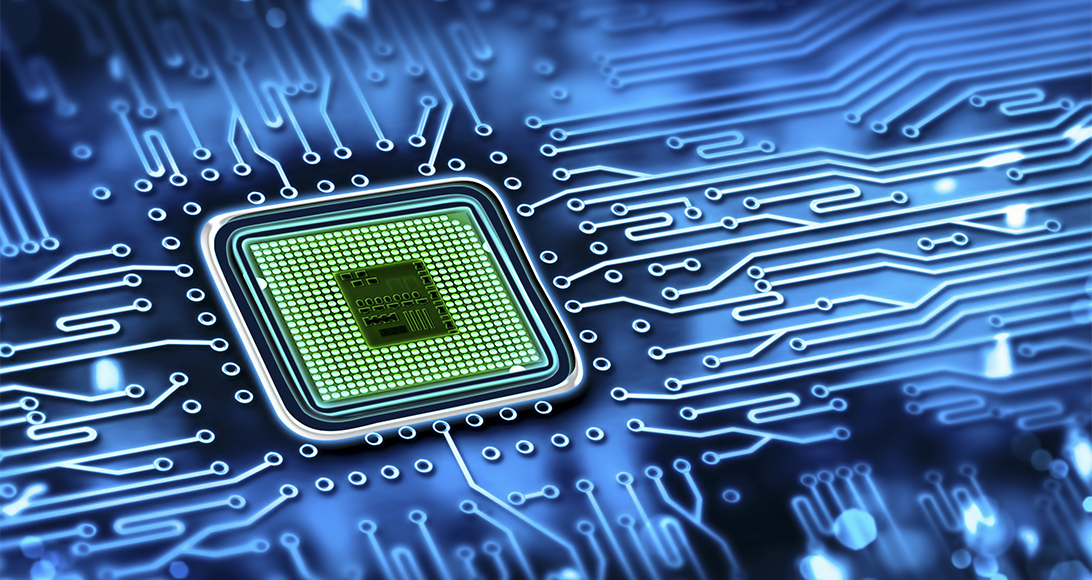
Intel
With innovations such as Ethernet, USB, and the development of the microprocessor, Intel has become a household name. Intel’s Core i5 processor family is an ideal choice for general computing use, while the Core i7 and Core i9 processors are better options for more demanding environments with heavier workloads. Select business SKUs also offer Intel’s remote management technology—called vPro—which utilizes hardware-based authentication to provide the most stable and secure PCs.With many of the latest (8th Gen to current) Intel processors also including support for Thunderbolt 3, Intel Optane Memory, and Wi-Fi 6 (802.11ax), Intel continues to push the limitations of performance and reliability in both desktop and thin-and-light devices.
AMD
Although Intel has more brand name recognition, AMD is a very strong competitor in the marketplace. AMD has out-of-the-box capabilities that Intel does not. An example of this is overclocking, the ability to increase speed once the processor is in use. AMD also offers better onboard graphics.The Ryzen 5 and 7 processors are AMD’s competitive counterparts to Intel’s i5 and i7.
Display
Most, if not all, considerations regarding laptop display revolve around two factors: screen size and resolution. Screen size refers to the diagonal measurement of the screen. Today’s laptop buyer can choose from a number of screen sizes, ranging from 11.6" to 17.3". But, for a number of reasons, a bigger laptop display is not always better. A larger screen means a larger, heavier laptop. Traveling with it, or lugging it through crowded airports every week, could get old quickly. For many, if not most users, it’s not necessary.
You will probably want a larger screen if you enjoy high-end gaming, or if you work as an architect, engineer, video editor, or graphic designer. For tasks such as word processing and general Internet use, a larger screen is not as important.
Screen resolution is a deciding factor in determining how your display will look. Screens use pixels to display images. The number of pixels, both horizontal and vertical, determines the screen resolution. A resolution of 1024x768 means that a display has 1024 pixels across the horizontal plane and 768 vertically. Laptop resolution choices range from 1366x768 to 3840x2160, aka Ultra-High Definition (UHD). Realistically, you should never choose a resolution below 1920x1080.
You will probably want a larger screen if you enjoy high-end gaming, or if you work as an architect, engineer, video editor, or graphic designer. For tasks such as word processing and general Internet use, a larger screen is not as important.
Screen resolution is a deciding factor in determining how your display will look. Screens use pixels to display images. The number of pixels, both horizontal and vertical, determines the screen resolution. A resolution of 1024x768 means that a display has 1024 pixels across the horizontal plane and 768 vertically. Laptop resolution choices range from 1366x768 to 3840x2160, aka Ultra-High Definition (UHD). Realistically, you should never choose a resolution below 1920x1080.
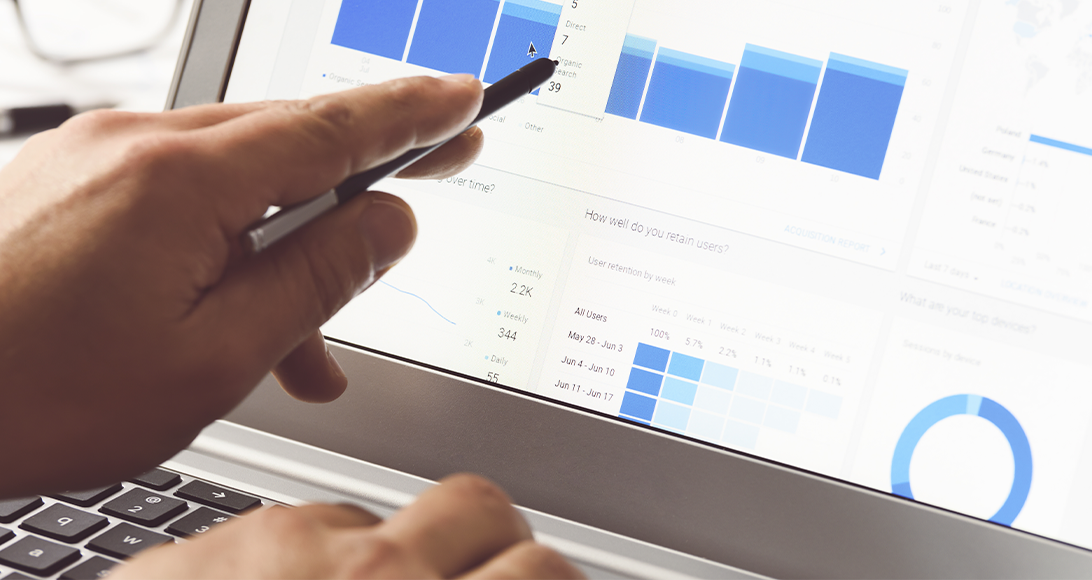
Common Display Terms Defined
- HD means high definition. It refers to a display resolution of 1280x720 pixels. Despite the HD designation, this resolution is not noted for being clear and sharp. For a better display, don’t settle for less than 1920x1080, typically referred to as 1080p. For instance,1920x1080, aka Full HD (FHD).
- 4K refers to the horizontal screen resolution of approximately 4000 pixels. Although the term 4K was not selected to indicate this, a 4K display has four times as many pixels as the 1920x1080 resolution.
- UHD, or Ultra HD, is often confused with 4K. So, what’s the difference? 4K equals a 4096x2160 resolution. UHD refers to a resolution of 3840x2160.
- Retina is a term used only by Apple for their products, refers to a screen with a minimum resolution of 2304x1440. Keep in mind that 4K displays are comparative to this display.
There is not a direct correlation between screen size and screen resolution. A smaller screen may have a 1024x768 resolution. A larger one may have the same resolution as the smaller one. But the larger screen in this scenario will have a lower quality display. Why? It has the same number of pixels as the smaller screen, but the larger screen means they are less densely packed, resulting in a lower quality image. A higher resolution on the same size screen means a sharper image. But that means a smaller display could be harder to see, resulting in eyestrain.
Graphics Processing Unit (GPU)
Many laptops now incorporate an onboard GPU. This is not the same component as a graphics controller. The GPU offloads many display and multimedia-related functions from the CPU. Pairing a GPU with the CPU can lead to greater display-related performance and quality.Touchscreens
We are used to touching the screens on our smartphones and tablets, so what about touchscreens on laptops? Some users like the convenience and ease of navigation they offer. And there may be some situations, such as healthcare, where a touchscreen is advisable.Of note, not all touchscreens come equipped with a stylus. But plenty do. This can be a very useful accessory, especially for creative and healthcare users.
A touchscreen offers you extra functionality, but if you don’t specifically need it, is it a good idea? Maybe not. For one thing, the touchscreen option can add considerable expense to your laptop. Also, it uses more power, and is a greater drain on a battery. This is because the digitizer, the mechanism that enables the touch, is always on. Carefully consider your needs, as well as the various pros and cons, before you invest in a touchscreen.
Memory

Computer buyers often misunderstand the difference between RAM (Random Access Memory) and storage. RAM is physically integrated circuitry that stores information temporarily while it is being used. To use a business analogy, if storage is a filing cabinet full of folders not currently in use, memory is the folders you have sitting on your desk as you work with them. Memory allows you to access its data much more quickly than you could if you had to retrieve it from the hard drive. And memory loses its contents when the laptop is turned off.
So how much memory does your laptop need? As with so many other components, it depends. More memory can result in more speed, but it also adds expense and uses more power, thus draining your battery more quickly. So, more memory is not always better.
Do you use programs that require a lot of memory, such as graphics or video editing? Or is most of your work done via a Web interface or word processing application? Let your use case and the software be deciding factors in how much memory to choose for your laptop.
Older operating systems require considerably less memory than new ones—as does Google Chrome OS compared to the latest versions of macOS and Windows. As a rule of thumb, for general use, you want a bare minimum of 2GB (gigabytes) of RAM for light use, and 4 or 6GB for better performance. This amount should be considered a minimum baseline. And 8GB or more would result in even better performance. In some cases, you might even need 16GB+. Some user categories, including engineers and creative users require 16–32GB RAM. It’s better to have too much RAM than too little.
So how much memory does your laptop need? As with so many other components, it depends. More memory can result in more speed, but it also adds expense and uses more power, thus draining your battery more quickly. So, more memory is not always better.
Do you use programs that require a lot of memory, such as graphics or video editing? Or is most of your work done via a Web interface or word processing application? Let your use case and the software be deciding factors in how much memory to choose for your laptop.
Older operating systems require considerably less memory than new ones—as does Google Chrome OS compared to the latest versions of macOS and Windows. As a rule of thumb, for general use, you want a bare minimum of 2GB (gigabytes) of RAM for light use, and 4 or 6GB for better performance. This amount should be considered a minimum baseline. And 8GB or more would result in even better performance. In some cases, you might even need 16GB+. Some user categories, including engineers and creative users require 16–32GB RAM. It’s better to have too much RAM than too little.
Storage
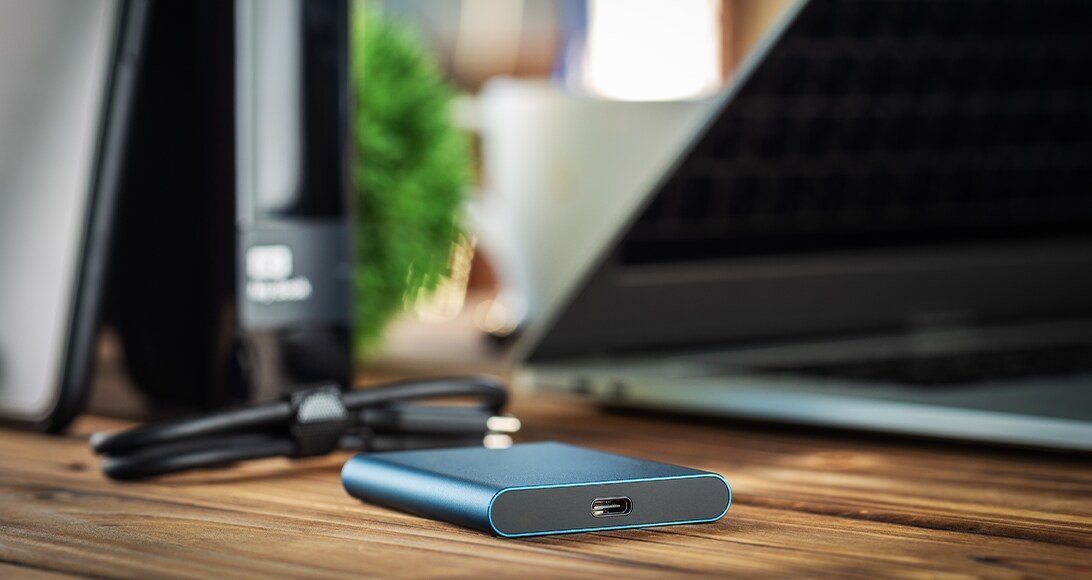
A laptop’s storage is where data is kept when said data is not in use. The traditional, and still viable, storage option, in most cases, is the hard drive (hard disk drive or HDD). But it’s no longer your only storage option. And in many cases, it is not your best choice.
Because the hard drive is a mechanical device with spinning plates, it is at a greater risk of failure. And it is a limiting factor in a laptop’s overall performance. Even when performing optimally, it is much slower than the computer’s memory or processor.
A solid state drive (SSD) may be a better option for you than a hard drive, despite a somewhat higher initial price point than its HDD counterpart. Unlike a hard drive, SSD has no moving parts. Your drive speed will increase by a factor of three or more, it will boot up much more quickly, applications will load faster, and your laptop’s performance will be greatly improved. This could be a real advantage for users—such as graphic artists, architects, or engineers—who heavily rely on a laptop’s performance to accomplish their job.
But this storage setup doesn’t have to be an either/or scenario. A hybrid option might be your best bet. With a hybrid drive, the SSD boots your operating system and startup applications, and the hard drive is used mainly for data storage.
Because the hard drive is a mechanical device with spinning plates, it is at a greater risk of failure. And it is a limiting factor in a laptop’s overall performance. Even when performing optimally, it is much slower than the computer’s memory or processor.
A solid state drive (SSD) may be a better option for you than a hard drive, despite a somewhat higher initial price point than its HDD counterpart. Unlike a hard drive, SSD has no moving parts. Your drive speed will increase by a factor of three or more, it will boot up much more quickly, applications will load faster, and your laptop’s performance will be greatly improved. This could be a real advantage for users—such as graphic artists, architects, or engineers—who heavily rely on a laptop’s performance to accomplish their job.
But this storage setup doesn’t have to be an either/or scenario. A hybrid option might be your best bet. With a hybrid drive, the SSD boots your operating system and startup applications, and the hard drive is used mainly for data storage.
Form Factor

In computing, the term form factor refers to the size and physical configuration of a computer. Obviously, by design, a laptop has a much different form factor than a desktop computer. Which form factor is best for your needs? Laptops typically have the clamshell form factor. Rectangular in shape, they open up to a 90-degree angle and have a keyboard on the bottom and a display screen at the top.
Other laptop form factors include:
Which form factor should you choose? Before you decide, consider how you plan to use your laptop. Will it sit primarily on your desk, and will you only move about with it occasionally? Then a regular clamshell laptop is probably your best choice. Do you need a lighter, more mobile option for basic use and Internet access? Then consider the Ultrabook option. Will you use your laptop in a fast-paced environment, where you are constantly moving around, specifically need a touchscreen, and something more powerful than a laptop? Then consider the convertible option.
Other laptop form factors include:
- Ultrabook
Not a tablet, an Ultrabook is a lightweight and powerful laptop option that often includes as much power and capacity as its larger counterparts—often at a premium price. Ultrabooks would be a wise choice for a user that needs more capability than offered by a tablet, but does not want—or need—a full-fledged, full-sized laptop. - Convertible 2-n-1
These high-powered, fully functional laptops offer the added convenience of being used as touchscreen tablets. These devices are great options for on-the-go users in environments where a stylus may be more suitable than a keyboard.
Which form factor should you choose? Before you decide, consider how you plan to use your laptop. Will it sit primarily on your desk, and will you only move about with it occasionally? Then a regular clamshell laptop is probably your best choice. Do you need a lighter, more mobile option for basic use and Internet access? Then consider the Ultrabook option. Will you use your laptop in a fast-paced environment, where you are constantly moving around, specifically need a touchscreen, and something more powerful than a laptop? Then consider the convertible option.
Shop by Form Factor: Clamshell | Convertible
Business-class Features

For some business uses, you need to consider leveraging several business features that may be of interest:
These features are not normally marketed front and center, so be certain to inquire about any business-class features you might take advantage of when considering specific laptops.
- Enhanced Security
Windows 10 offers a wide range of security capabilities over its predecessors and competing operating systems. These features seek to protect against cyberattack from the laptop hardware all the way to the user. Many laptops today offer a Trusted Platform Module (TPM) chip which is a mixture of hardware and software that provides a number of security-related services, such as protecting encryption keys, certificates and passwords, as well as checking a laptop’s firmware to ensure it hasn’t been altered by malware. - Collaboration
Disparate workforces require technology to replace the interaction of being in the same office. Cloud-first laptops, such as those using Chrome OS, are designed to seamlessly integrate with cloud applications and services. Additionally, laptops offering higher-quality webcams and microphones can aid in improving a user’s video conferencing experience. - Fleet Management
Organizations seeking to keep track of vehicles and the employees behind the wheel can use laptops via cellular connections. Remote management capabilities also can be used to support, lock, and wipe laptops remotely.
These features are not normally marketed front and center, so be certain to inquire about any business-class features you might take advantage of when considering specific laptops.
Build Quality
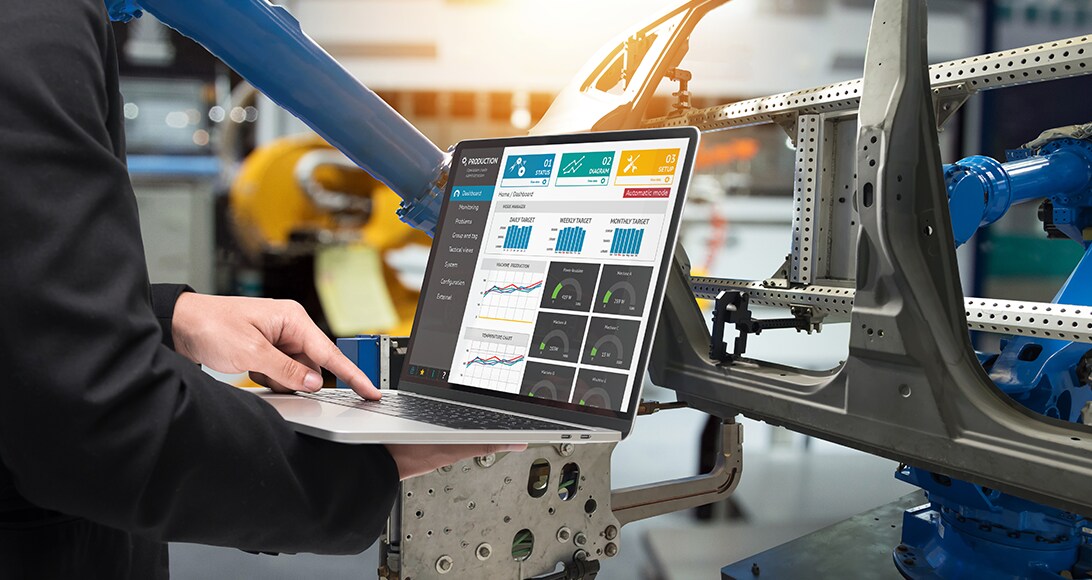
This is an area where you can expect to get what you pay for. A lower-quality, budget laptop may suit your needs. But, for many users, especially in high-use business environments, this will not be the case. In these situations, quality, reliability, durability, and performance will be crucial.
A laptop with a strong build quality will feel sturdy and durable, not weak and flimsy. A poor build quality will affect the outside of the laptop and may be indicative of other problems. A company that cuts corners with build quality will probably skimp on internal components and engineering as well.
Some laptops use high-quality materials, such as carbon fiber used in a laptop’s chassis. Others put quality into the entire laptop design, such as a unibody laptop—where the case is made from a single piece of metal. Unibody laptops, such as Apple’s MacBook Pro, have a decided advantage over those with plastic frames: they are far more durable. For use in extreme work environments such as a construction site, many users prefer a rugged laptop. These are specifically engineered and built to survive rough conditions such as exposure to water, dirt, heat, or being dropped. Naturally, because of these additional features and capabilities, they are more expensive than standard laptops.
For not-so-challenging work environments, additional protection and shock absorption can be gained from laptop sleeves, bags, and cases.
A laptop with a strong build quality will feel sturdy and durable, not weak and flimsy. A poor build quality will affect the outside of the laptop and may be indicative of other problems. A company that cuts corners with build quality will probably skimp on internal components and engineering as well.
Some laptops use high-quality materials, such as carbon fiber used in a laptop’s chassis. Others put quality into the entire laptop design, such as a unibody laptop—where the case is made from a single piece of metal. Unibody laptops, such as Apple’s MacBook Pro, have a decided advantage over those with plastic frames: they are far more durable. For use in extreme work environments such as a construction site, many users prefer a rugged laptop. These are specifically engineered and built to survive rough conditions such as exposure to water, dirt, heat, or being dropped. Naturally, because of these additional features and capabilities, they are more expensive than standard laptops.
For not-so-challenging work environments, additional protection and shock absorption can be gained from laptop sleeves, bags, and cases.
Battery Life
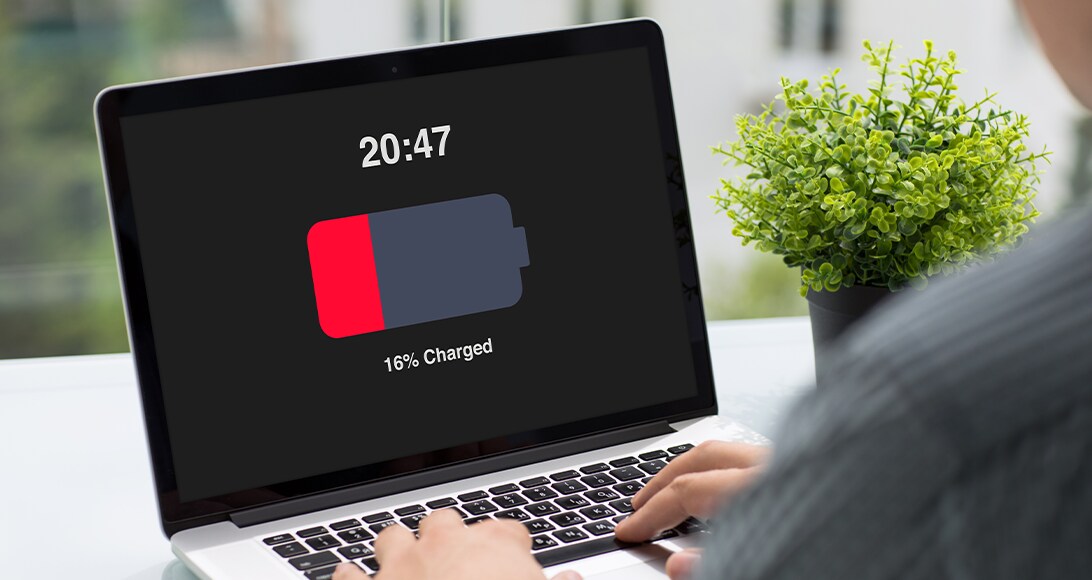
One of the main reasons people invest in a laptop is to be able to use their computer in a highly mobile state. This makes the battery a vital laptop component. You don’t want to be tied to a wall outlet or worried that your battery will quit on you and leave you unable to keep working. Regardless of battery quality, a number of factors cause it to drain faster, including size and amount of RAM, and the degree to which the processor is being used.
There are three primary characteristics to be looking for in a battery:
There are three primary characteristics to be looking for in a battery:
- Number of Cells
A cell represents a compartment within a battery casing that produces power. The larger the number of cells, the higher the reliability of the battery to consistently keep a laptop running. There may be as many as 12 cells in a battery. The higher the demand for performance by a laptop user, the higher the number of cells. - Watt Hours (Wh)
This is a measurement of the battery capacity. Wh ranges can vary—just proceed with the simple understanding that you are looking for as high a number as possible. The greater the Wh, the less frequently a user who works anywhere outside the office will need to recharge. - Replacement
Some batteries are fully integrated into a laptop’s body, so they can’t be easily replaced without professional help or voiding the manufacturer warranty. But some laptops are designed to allow the battery to be quickly detached from the laptop, allowing those users with extended workloads to carry extra batteries, extending the duration of their work recharging.
Ports

3.5 mm Audio JackThis is the world’s most common audio jack, and it is found on most laptops. It’s compatible with most headphones and computer speakers. |
Ethernet Port (RJ-45)This built-in adapter allows you to connect directly to a wired network, and is still in wide use in business networking environments. Even if you rely heavily on Wi-Fi, the ability to plug in to an Ethernet network is valuable, especially if you are in an area where there is Ethernet but no Wi-Fi, or the Wi-Fi signal is weak. |
HDMI (High-Definition Multimedia Interface)This port is commonly used to connect to TVs, external monitors, and projectors. It sends audio and video signals and may produce an output of up to 4K resolution, depending on your laptop’s graphics card. |
Docking StationsUsers need the ability to quickly connect their laptop to a wide range of accessories. Both desktop-based and travel docks offer users an ability to both expand the number of peripherals to their laptop and simplify the process of doing so. USB and USB-C docking stations are widely available, as are options that are specific to certain manufacturers and laptop models. |
USB (Universal Serial Bus)This is the most common and versatile port found on today’s laptops. On some laptops, including the MacBook Pro, it’s the only port available. USB ports serve a wide array of purposes, including file transfer between devices, and connecting peripheral devices such as a mouse and keyboard.There are many different USB adapters available, including Ethernet and video adapters. |
USB-CThis specialized USB port, often referred to as future proof, will likely soon become standard equipment on all new laptops, replacing traditional port types. Some laptops, including newer MacBooks, now feature USB-C as the only port, thus requiring users to rely on multiple dongles or an external device hub.Unlike other USB adapters, USB-C can be inserted either way. |
AccessoriesFrom audio headphones, to external hard drives, to protective carrying cases, to Ethernet and USB cables, to stylus input devices for selected tablets and laptops—there is no shortage of available accessories to help you protect your laptop investment and maximize your use and enjoyment from it. Keep in mind that many old-school laptop accessory ports are going away. Your best bet is to stick with USB. Also, keep in mind that USB-C will likely soon become the only port option on new laptops. |
Connectivity

The vast majority of laptop users want to connect to the Internet. Many in a business environment need to also connect to a local-area network (LAN). There a few different connectivity options for laptops today.
- Wi-Fi (Wireless)
Wi-Fi has expanded greatly in popularity over the last several years. It’s now the default Internet connectivity option. Most, if not all, new laptop models will come equipped with Wi-Fi built in. - Ethernet (Wired Networking)
This method of joining a laptop to a LAN or the Internet requires a physical Ethernet cable connection. Ethernet adapters will be built-in to the vast majority of laptops you will encounter. Even if you rely overwhelmingly on Wi-Fi, it’s important to have Ethernet connection capability for your laptop. - Bluetooth
This is a wireless networking standard that is typically used to connect remotely, without wiring, to peripheral devices. It can connect wirelessly to the Internet by tethering to a wireless phone. This allows it to use the phone’s data link to retrieve Internet data. Keep in mind that not all wireless service providers offer tethering, and some charge a premium for it. It will also contribute to your phone’s data use totals. - Cellular
There may be times when you need to connect to the Internet but have no Wi-Fi or Ethernet option available. Some laptops (particularly in the rugged and tablet categories, but found across the board) have a cellular connectivity (generally marketed as LTE Connectivity), allowing you to access the Internet with an activated cellular plan.
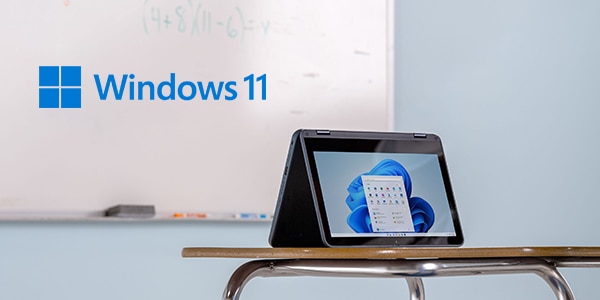
Unbox. Log in. Take off.
Low-cost Windows education devices deployed with Windows Autopilot are ready from day one
Laptop User Personas

The first step in choosing the right laptop is understanding who will be using it and what they will be using it for. A number of common user personas exist today:
Knowledge Worker/In-Office User
Office workers need to have access to the Internet and productivity software such as Microsoft Office. If their computers will be joined to a domain and access a server, the right client OS version is required. Portability is useful, but not needed to the same degree a business traveler or student requires. So, office workers may want a larger laptop to have an easier-to-read screen display. If the laptop is going to be used primarily at one desk, you might want to invest in accessories such as speakers, a high-quality mouse, an ergonomically-friendly keyboard, and a larger monitor to improve user productivity while in the office.Traveling User
Users that are constantly on the road, telecommuting, or have a need to be always on, have similar needs to that of the Knowledge Worker/In-Office User, but with a few specific requirements to make their constant traveling easier. Laptops for this category of user should be lightweight, thin (so as to not take up a lot of space), have all-day battery capacity, and even built-in LTE connectivity.Creative User
This category of laptop user includes graphic designers, photo and video editors, and filmmakers. Suffice it to say, they need plenty of processing and graphics capability. Nvidia and AMD offer great graphics card options for laptops for creative users.Creative users will want a large display and may need dual-monitor capability—along with more RAM. On a tablet, or convertible 2-in-1, you also want a stylus. And, as is the case with some users, you may benefit from investing in a touchscreen if this purchase is for a creative user. Also, keep in mind that you want too much power and capability rather than too little.
Apple has a well-earned reputation for making great laptops for creative pros, but Dell and Microsoft also offer solid alternatives.
Workstation Replacements for Engineers, Scientists
These users need a high degree of computing power that compares with that of a traditional workstation. That’s why 8GB RAM should be considered a minimum, as should a 1TB hard drive and separate graphics card. A powerful processor, high-resolution screen, and a large, clear display are also vital.Portability will be less of an issue in this category than it will be for students and travelers, so feel free, budget permitting, to invest in a larger unit with more features. And remember: In this computing category, it is better to err on the side of caution and have too much computing power.
Military, Industrial, and Construction Applications
The operative word for laptops adequate for these extreme uses and environments is rugged or ruggedized. The benefit is that these specialized laptops can survive abuse and still get the job done. They are meant to be used outdoors and in extreme conditions.Heavy-duty metal cases, reinforced screens, sealed ports, and shock-mounted components are the norm in a rugged laptop.
There are a couple of standards to look for when searching for the right rugged computer. One is the United States military standard MIL-STD-810G, which incorporates 29 severe tests ranging from dropping to dunking to exposure to extreme heat.
The second test to look for is the IP (Ingress Protection) rating. The first number in this rating, ranging from zero to six, represents the level of protection against dust, dirt, and sand. The second number determines the rugged laptop’s level of water proofing.
A laptop that passes these two tests will be strong and rugged indeed!
Expect that these rugged models will be considerably more expensive than most of their indoor-use counterparts. And they will be much heavier than conventional laptops. Also, do not expect to have the range of features and uses available on other laptops. For example, a rugged laptop will not have the graphics capabilities needed by graphics designers and video editors.
Gaming User
Because gaming is such a time-sensitive use of a laptop, it requires plenty of memory and strong processing power. You also want a crisp, clear display on a large screen. If your RAM becomes too heavily used, your computer must rely on your hard drive, thus drastically impairing your performance and hurting your gaming experience.Take, for instance, the fact that 4GB RAM used to be more than adequate for an enjoyable gaming experience. Not anymore. Gaming technology has gone through many updates and advancements since those days, requiring more computing power. And even if your RAM is adequate today, it may not be enough for games in the near future.
With graphics, it’s preferable to have too much capability now rather than risk having too little later. Your choice of graphics processing unit (GPU) is one of your most important decisions as you choose your gaming laptop.
Most gaming laptops come equipped with Nvidia GeForce GTX or RTX GPUs. The top-of-the-line Nvidia RTX 20 GPUs are now available in laptops. They are a high-priced option. The Nvidia RTX 10-series is still a solid choice for most games today. Gaming relies more on video processing than the CPU. So, consider a laptop with a strong GPU, a mid-range processor, and a larger screen with fairly high resolution.
Student User
A laptop is a must-have item for today’s college student and is useful, maybe even required, for many younger students. At a minimum, every student laptop should have basic word processing, spreadsheet, and presentation software, such as Microsoft Office. And the laptop must also include Wi-Fi connectivity. Chromebooks tend to fit the bill for basic student users.Beyond the basics, what will the laptop be used for? Students taking hardware-intensive engineering and design classes require stronger graphics, as well as faster RAM and processor.
Students spend a lot of time carrying their laptops with them. Make sure the choice is easily portable and small enough to fit inside an average-sized backpack.
 |
Laptops for Home UsersWhether you're working from home, doing schoolwork, or getting your game on, your laptop has to deliver performance that keeps you ahead of everyone else. Find the perfect model to complement your unique needs with help from our laptop user infographic.Download Infographic |
 |
Laptops for Work UsersDo you know what type of laptop user you are? Explore your computing options and see how the right device can help you power through your day.Download Infographic |
Comparison Matrix
Use the laptop buying guide matrix below to quickly see how important a laptop feature is to each of the personas, helping you to identify the needed mix of features that define the right laptop to purchase.
Student |
Gaming |
Creative |
Engineering/
|
Business Travel |
Office
|
Military/Industrial/
|
Home/Light/
|
|
|---|---|---|---|---|---|---|---|---|
| Portability | ||||||||
| SSD Storage | ||||||||
| HDD Storage | ||||||||
| Intel i5/AMD Ryzen 5 | ||||||||
| Intel i7/AMD Ryzen 7 | ||||||||
| Intel i9/AMD Ryzen 9 | ||||||||
| RAM: 2-4 GB | ||||||||
| RAM: 8 GB | ||||||||
| RAM: 16+ GB | ||||||||
| Wi-Fi | ||||||||
| 12.5-14 in. Screen Size | ||||||||
| 15 in. Screen Size | ||||||||
| 17 in. Screen Size | ||||||||
| Touch Screen | ||||||||
| Stylus | ||||||||
| Rugged Build | ||||||||
| Enhanced Security | ||||||||
| On-Board GPU | ||||||||
| HD “High Definition” Resolution | ||||||||
| UHD “Ultra High Definition” Resolution | ||||||||
| Retina Display (Only on Apple Products) | ||||||||
| 4K Resolution | ||||||||
| Long Battery Life | ||||||||
| Ethernet | ||||||||
| = Important/Very Useful | = Moderately Important/Somewhat Useful | = Not Important/Of Little Use | ||||||||
Determining Which Laptop Is Right for You
Use the following questions to help you identify which specific laptop features are important to work towards selecting the correct laptop to meet your needs.
Ultrabooks with their light weight are often a good choice, unless the user has specific hardware requirements.
Laptops with 2-in-1 form factors and touchscreens that support stylus input are a good choice for scenarios like this.
In this situation, a 2-in-1 laptop with a stylus may be useful. A large screen display, high screen resolution, onboard GPU, and a greater amount of RAM are also required.
Ease of portability may or may not be a requirement here. If it is, choose a laptop size and battery life accordingly. Windows is the primary choice, with MacOS having some degree of connectivity to a Microsoft-based network. Productivity software and enhanced security are also needed, so consider application needs at the same priority as laptop requirements.
In this use case, security and the ability to join a domain network are paramount, as are a large, clear display, a high degree of processing and memory power, and a very large drive, preferably SSD or a hybrid drive.
Gaming laptops require a clear, prominent display with high screen resolution. An onboard GPU is preferable. A large amount of RAM and CPU power are also needed.
A middle-of-the-road general purpose laptop, or maybe even a Chromebook may suffice.
In this extreme use case, the only real option is a laptop with a rugged form factor.
Avoiding Laptop Buying Pitfalls
No single laptop is right for every use case. For example, the right laptop for a student or business traveler will be woefully inadequate for an engineering workstation replacement. A rugged laptop will be extremely durable, but will be unsuitable for graphic designers.
Bottom line: there are many potential laptop buying mistakes to avoid, including these:
- Buying a laptop on impulse without considering how it will be used.
- Buying the cheapest model you can find, or selecting specific components just because they are less expensive. There is a difference between price and value. A low-priced laptop is cheap, but does it deliver great value? Probably not.
- Buying a laptop with a display too small for your needs.
- Not investing in enough computing power when you genuinely need it.
- Spending too much by paying for features and capabilities you really don’t need or won’t use.
- Not considering if your laptop will be future proof. It works fine now, but how will it perform in two to three years when more resource-intensive software is released?
- Not determining that the laptop has the specific ports you need.
- Buying a laptop with many battery-draining features when you plan to use it in a manner that requires you to go a longer time between charges.
- Buying for another user without test driving it.
Ready to choose the right laptop? Or maybe you need more help finding the perfect machine?
Get answers to your questions and more by calling an Account Manager at 1.800.800.0014.
Batch Add Products by Item #
14






